-
ORIGINAL ARTICLE01-30-2023
Educational material production and validity: educational instrument for home care for premature newborns
Revista Brasileira de Enfermagem. 2023;76(1):e20210648
Abstract
ORIGINAL ARTICLEEducational material production and validity: educational instrument for home care for premature newborns
Revista Brasileira de Enfermagem. 2023;76(1):e20210648
DOI 10.1590/0034-7167-2021-0648
Views0See moreABSTRACT
Objective:
to produce and validate a booklet, based on Jean Watson’s Theory, on home care for premature newborns, based on caregivers’ experiences.
Method:
a methodological study, developed in the following stages: diagnosis of knowledge needs about home care; survey of scientific content; educational material production; and validity by judges/experts.
Results:
the literature review resulted in 19 articles. The main themes (breastfeeding, bath care, bond building, infection prevention and support network) were listed for producing the booklet “Booklet for Premature Newborns: Demystifying Home Care”. The booklet content and appearance received the overall Content Validity Index of 0.85, considered suitable within the scientific rigor of validity.
Final considerations:
the booklet produced and validated is an educational material whose main role is to provide knowledge and awaken caregivers’ autonomy in providing home care to newborns.
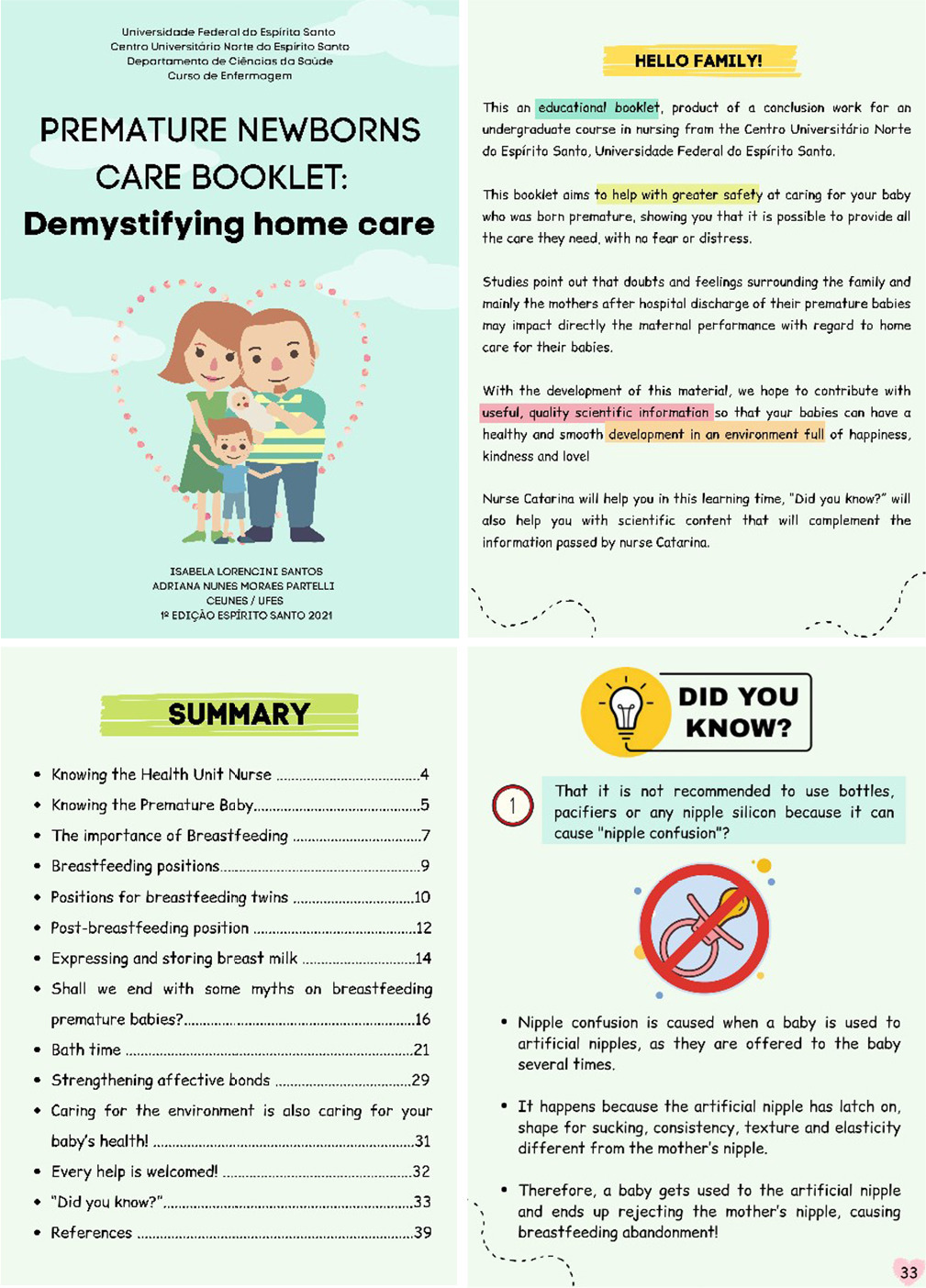
-
01-30-2023
Acurácia do diagnóstico de enfermagem desobstrução ineficaz de vias aéreas em pacientes de unidade de terapia intensiva
Revista Brasileira de Enfermagem. 2023;76(1):e20220174
Abstract
Acurácia do diagnóstico de enfermagem desobstrução ineficaz de vias aéreas em pacientes de unidade de terapia intensiva
Revista Brasileira de Enfermagem. 2023;76(1):e20220174
DOI 10.1590/0034-7167-2022-0174
Views0See moreRESUMEN
Objetivos:
analizar la precisión de indicadores clínicos de limpieza ineficaz de las vías aéreas en pacientes de unidades de cuidados intensivos adulto.
Métodos:
estudio de precisión diagnóstica en unidad de cuidados intensivos de hospital universitario en noreste brasileño. Muestra de 104 pacientes hospitalizados entre junio y octubre de 2019.
Resultados:
prevalencia de limpieza ineficaz de las vías aéreas del 36,54%. Indicadores con alta especificidad; ausencia de tos (0,8326), ortopnea (0,6817), ruidos respiratorios adventicios (0,8175) y ruidos respiratorios disminuidos (0,8326). Indicadores clínicos con alta sensibilidad y especificidad; cambio en la frecuencia respiratoria (0,9999) y cambio en el patrón de respiración (0,9999).
Conclusiones:
seis indicadores clínicos proporcionaron identificación precisa de la limpieza ineficaz de las vías aéreas; cambio en la frecuencia respiratoria y cambio en el patrón de respiración fueron los más precisos para pacientes críticos. Nuestros hallazgos contribuyen a inferencias diagnósticas precisas y la prevención de complicaciones respiratorias en estos pacientes.
-
REVIEW01-30-2023
Transition from parents to caregivers of a child with type 1 Diabetes Mellitus: a scoping review
Revista Brasileira de Enfermagem. 2023;76(1):e20220201
Abstract
REVIEWTransition from parents to caregivers of a child with type 1 Diabetes Mellitus: a scoping review
Revista Brasileira de Enfermagem. 2023;76(1):e20220201
DOI 10.1590/0034-7167-2022-0201
Views0See moreABSTRACT
Objectives:
to map and summarize the existing scientific evidence on parents’ transition experience to exercise the caregiver role of a child with 1DM, identifying gaps in knowledge of this experience.
Methods:
a scoping review was carried out based on JBI methodology, in two databases, following the Preferred Reporting Items for Systematic Reviews and Meta-Analyses extension for Scoping Reviews checklist.
Results:
we included 31 articles. From the studies, constitutive elements of parents’ transition experience to caregiver role of a child with 1DM were found, which focused on the nature of the experience, the feelings and emotions experienced, the hindering conditions, the facilitating conditions, the strategies used by parents and the results or effects obtained.
Final considerations:
the transition process’ characterizing elements were identified, but not a theoretical explanation of it. Additional research should be carried out in order to allow a deeper understanding of this process.
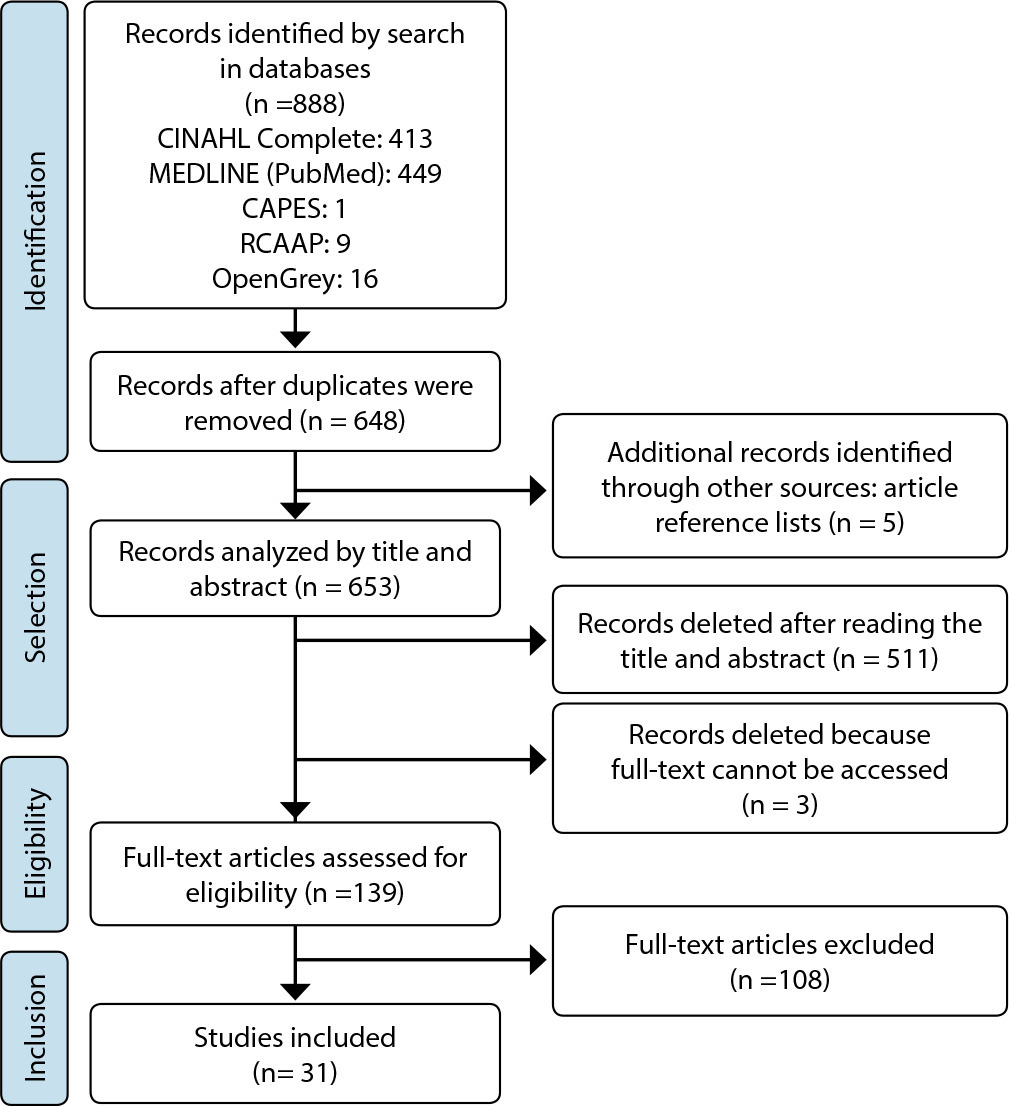
-
ORIGINAL ARTICLE01-30-2023
Development and content validity of a website for patients with coronary artery disease
Revista Brasileira de Enfermagem. 2023;76(1):e20220302
Abstract
ORIGINAL ARTICLEDevelopment and content validity of a website for patients with coronary artery disease
Revista Brasileira de Enfermagem. 2023;76(1):e20220302
DOI 10.1590/0034-7167-2022-0302
Views0See moreABSTRACT
Objectives:
to develop and analyze content validity evidence of a website for patients with coronary artery disease.
Methods:
a methodological study, carried out in the phases: Definition – determined contents for inclusion in the website, architecture and design; Implementation – subjects included in the website; Assessment – website submitted to analysis by 13 experts and eight laypersons regarding organization, content and design, on a scale of 1 (no agreement) to 4 (complete agreement). Items that reached Content Validity Ratio (CVR) higher than the established critical values and Content Validity Index greater than 0.80 were considered valid.
Results:
eight domains related to secondary prevention in coronary heart disease were included on the website. Critical CVR and adequate CVI were obtained according to professional and lay experts.
Conclusions:
the website was developed, achieving adequate content validity evidence, and can be used as an educational tool for this population.
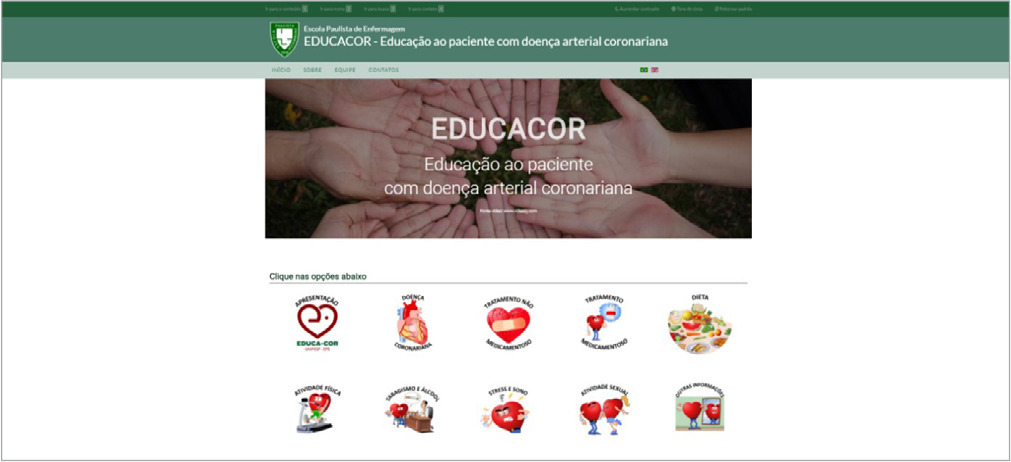
-
ERRATUM01-06-2023
ERRATUM
Revista Brasileira de Enfermagem. 2023;76(2):e2023n2e01
Abstract
ERRATUMERRATUM
Revista Brasileira de Enfermagem. 2023;76(2):e2023n2e01
DOI 10.1590/0034-7167.20237601e01
Views0In the article “Development and validity of an educational folder for pulmonary tuberculosis sputum collection”, with DOI number: , published in Revista Brasileira de Enfermagem, 2023;76(1):e202220194, on page 8:Delete:[…]See more -
ERRATUM12-02-2022
ERRATUM
Revista Brasileira de Enfermagem. 2022;75(4):e2022n4e06
Abstract
ERRATUMERRATUM
Revista Brasileira de Enfermagem. 2022;75(4):e2022n4e06
DOI 10.1590/0034-7167.20227504e06
Views0In the article “Effects of multidisciplinary rounds and checklist in an Intensive Care Unit: a mixed methods study”, with DOI number: ”;, published in Revista Brasileira de Enfermagem, 2022;75(3):e20210934, in the abstract:Where it read:[…]See more -
ORIGINAL ARTICLE11-29-2022
Outlining the therapeutic itineraries of children with disabilities in the professional health care subsystem
Revista Brasileira de Enfermagem. 2022;75(3):e20210169
Abstract
ORIGINAL ARTICLEOutlining the therapeutic itineraries of children with disabilities in the professional health care subsystem
Revista Brasileira de Enfermagem. 2022;75(3):e20210169
DOI 10.1590/0034-7167-2021-0169
Views0See moreABSTRACT
Objectives:
to identify the outlining of therapeutic itineraries of families of children with disabilities in the professional health care subsystem.
Methods:
qualitative research carried out in two specialized services in the state of Ceará, with 41 family members interviewed using the life path technique and reports submitted to descending hierarchical classification and similitude analysis, with the help of the IRaMuTeQ software and the theoretical framework of health care systems.
Results:
the classes described the families’ itineraries in five paths, related to faith, support structures, medical behaviors, professionals, and health services. The professional subsystem stood out as deficient in outlining the therapeutic itinerary for access to health care for children with disabilities, without promoting integration between services in the Care Network.
Final considerations:
the families’ therapeutic itineraries showed homogeneous discourse with themes related to the care of professionals and spiritual aspects.
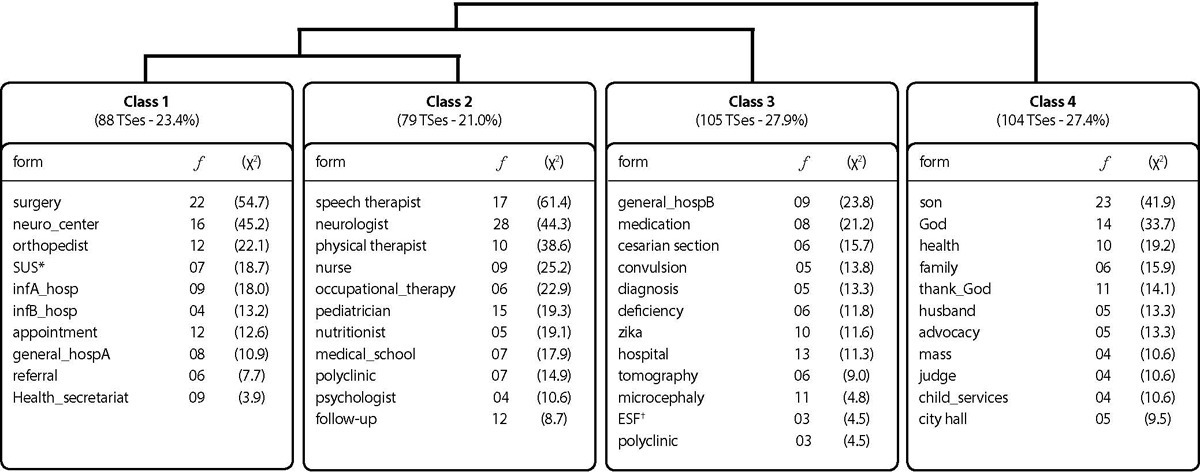
-
ORIGINAL ARTICLE11-29-2022
Ergonomics of anatomical bra models for breastfeeding: a contribution of nursing
Revista Brasileira de Enfermagem. 2022;75(3):e20210264
Abstract
ORIGINAL ARTICLEErgonomics of anatomical bra models for breastfeeding: a contribution of nursing
Revista Brasileira de Enfermagem. 2022;75(3):e20210264
DOI 10.1590/0034-7167-2021-0264
Views0See moreABSTRACT
Objectives:
to analyze the ergonomics of two models of breastfeeding bras.
Methods:
descriptive study carried out with 152 infants in a Brazilian university hospital. The prototypes were separated into two groups (A and B). To compare the two bra models, the Odds Ratio (OR) was used as a measure of the strength of the association. In subjective perceptions, the Modified Borg Scale, and the chi-square test of independence (χ2) were used. To compare the two prototypes, the Z test and logistic regression analysis were performed. A significance level of 5% was considered.
Results:
the bra in group B was more suitable for ergonomics of physical and psycho-aesthetic comfort than the bra in group A (p < 0.0001), according to the logistic regression tests.
Conclusions:
modeling B was ergonomically adequate, with usability and evaluation criteria centered on breastfeeding women.
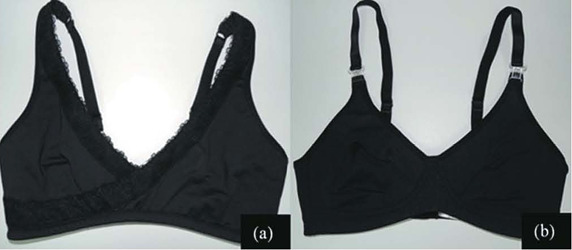
-
REFLECTION09-29-2022
Health care of deaf persons during coronavirus pandemics
Revista Brasileira de Enfermagem. 2022;75:e20201036
Abstract
REFLECTIONHealth care of deaf persons during coronavirus pandemics
Revista Brasileira de Enfermagem. 2022;75:e20201036
DOI 10.1590/0034-7167-2020-1036
Views0See moreABSTRACT
Objective:
To reflect about the barriers experienced by the deaf population during the COVID-19 pandemic, the proposals to overcome communication barriers in health care and the role of public policies in effecting the social inclusion of deaf people.
Methods:
Reflection based on studies on health care for deaf people, the COVID-19 pandemic and public accessibility policies.
Results:
The global crisis of COVID-19 has deepened pre-existing inequalities in the world, in addition to highlighting the vulnerability of people with disabilities, including deaf. Government, institutional and social initiatives to mitigate difficulties in communicating to deaf people have been made, but they are still insufficient to guarantee protection for them in this pandemic and full inclusion in health care.
Final considerations:
Social inclusion, supported by law, and the linguistic accessibility of deaf people still need to generate broad and concrete actions so that deaf people can enjoy their rights as citizens.
-
ORIGINAL ARTICLE12-07-2020
Sarcopenia screening in elderly in primary health care: nurse knowledge and practices
Revista Brasileira de Enfermagem. 2020;73:e20200421
Abstract
ORIGINAL ARTICLESarcopenia screening in elderly in primary health care: nurse knowledge and practices
Revista Brasileira de Enfermagem. 2020;73:e20200421
DOI 10.1590/0034-7167-2020-0421
Views0See moreABSTRACT
Objective:
Describe the knowledge and practices of the Primary Health Care nurse on sarcopenia screening in the elderly.
Methods:
Qualitative study conducted with 24 Primary Health Care nurses. The data was collected through semi-structured interviews, recorded and later transcribed. The speeches were grouped in thematic categories, later analyzed, supported by Paulo Freire’s reference.
Results:
The findings showed that the primary care nurses’ knowledge of sarcopenia screening in the elderly was incipient and fragile. This reality is reflected in a gap in practice, although some instruments already require the registration of characteristics indicative of sarcopenia, such as the evaluation of the calf circumference.
Final Considerations:
The need to train nurses to perform sarcopenia screening and to implement a promotional and preventive care plan, which will result in improving the quality of life of the elderly assisted in Primary Care, was highlighted.
-
REVIEW08-05-2020
Communication of bad news in pediatrics: integrative review
Revista Brasileira de Enfermagem. 2020;73:e20190059
Abstract
REVIEWCommunication of bad news in pediatrics: integrative review
Revista Brasileira de Enfermagem. 2020;73:e20190059
DOI 10.1590/0034-7167-2019-0059
Views1See moreABSTRACT
Objectives:
to identify the scientific evidence of the elements of communication in the process of communicating bad news in pediatrics.
Methods:
integrative review searched in the LILACS, PubMed and WoS databases. Primary studies in Portuguese, Spanish or English were included.
Results:
the evidence from the 40 studies were organized according to the elements of communication: sender (family and/or professional), receiver (family and/or child), message (bad or difficult news about diagnosis/prognosis; empathetically, honestly, objective, hopeful and available), channel (materials, quality, quantity and pace), context and effects (social and emotional changes), noise (feelings and language) and failures (silencing and misleading information).
Conclusions:
there is a need to prepare the institution and team, as well as the family and the child, in order to promote co-responsibility in this process, to minimize suffering and communication noise and to avoid failures, recognizing the child’s right to know their condition.
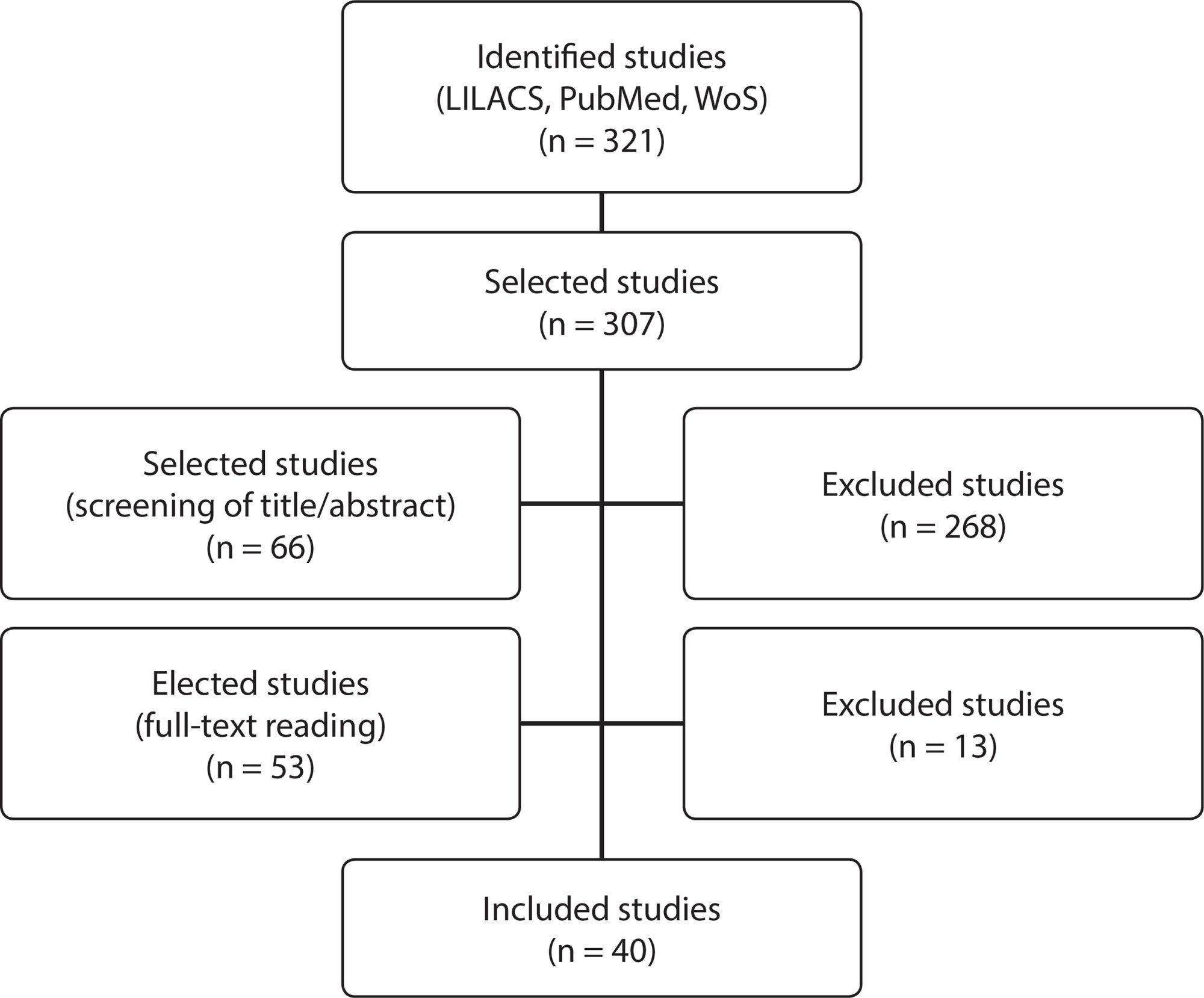
-
01-22-2021
Humanization practices in the parturitive course from the perspective of puerperae and nurse-midwives
Revista Brasileira de Enfermagem. 2021;74:e20190743
Abstract
Humanization practices in the parturitive course from the perspective of puerperae and nurse-midwives
Revista Brasileira de Enfermagem. 2021;74:e20190743
DOI 10.1590/0034-7167-2019-0743
Views1See moreABSTRACT
Objective:
to understand humanization practices in the parturitive course from the point of view of purperae and nurse-midwives.
Methods:
an exploratory, descriptive, qualitative research carried out in a maternity hospital in Bahia State. Semi-structured interviews were carried out, with a structured script applied to 11 mothers and 5 nurse-midwives from March to June 2019. Analysis followed Bardin’s content structure.
Results:
this study unveiled the importance of using soft care technologies, respect for female role, active participation and women’s autonomy as a positive impact on the parturition process.
Final considerations:
nurse-midwives are qualified professionals to assist women in labor and birth. They can favor the implantation and implementation of care with humanization practices, respect for women’s choices and incentive to the normal way of delivery with an expanded view of individual and multidisciplinary needs.
-
ORIGINAL ARTICLE03-30-2020
Meanings assigned by families about children’s chronic disease diagnosis
Revista Brasileira de Enfermagem. 2020;73(2):e20180742
Abstract
ORIGINAL ARTICLEMeanings assigned by families about children’s chronic disease diagnosis
Revista Brasileira de Enfermagem. 2020;73(2):e20180742
DOI 10.1590/0034-7167-2018-0742
Views0See moreABSTRACT
Objectives:
to understand the meanings assigned by family caregivers about children’s chronic disease diagnosis.
Methods:
qualitative study, which used as theoretical framework the Symbolic Interactionism, and methodological, the Grounded Theory. It was held in a pediatric unit in Southern Brazil, in 2016, through interviews submitted to open and axial analysis, with the participation of 20 family caregivers of hospitalized children.
Results:
relatives, interacting with the nursing/health staff, perceive children’s disease at birth. They are diagnosed with chronic disease by the physician and deny it. Subsequently, they accept and seek information on care.
Conclusions:
the results pointed out the stages that relatives experience by assigning meanings to about children’s chronic disease diagnosis. These meanings provide subsidies for nurses’ actions, which need to be aware of children’s and family’s needs in order to offer comprehensive and humanized care.
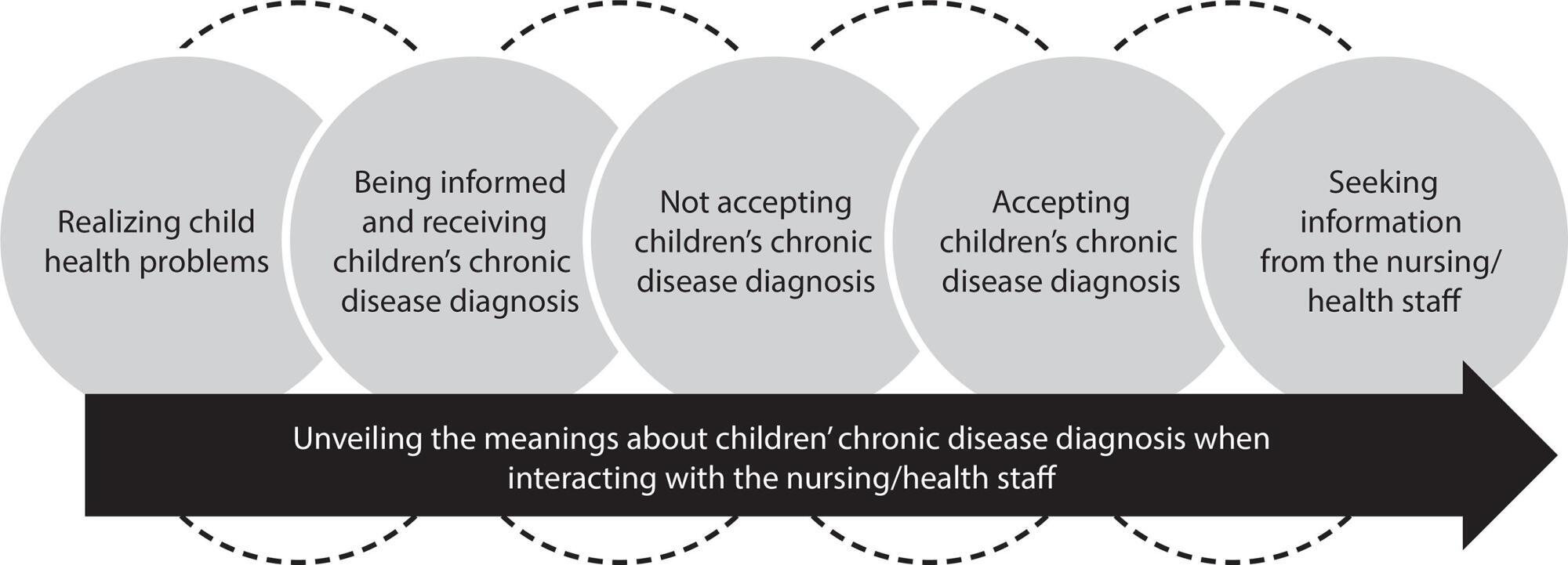
-
03-09-2020
Psychiatric nursing and mental health teaching in relation to Brazilian curriculum
Revista Brasileira de Enfermagem. 2020;73(2):e20180200
Abstract
Psychiatric nursing and mental health teaching in relation to Brazilian curriculum
Revista Brasileira de Enfermagem. 2020;73(2):e20180200
DOI 10.1590/0034-7167-2018-0200
Views0See moreABSTRACT
Objectives:
to know the scientific production on psychiatric nursing and mental health teaching in relation to Brazilian nursing curriculum.
Methods:
an Integrative Literature Review with no temporal delineation, whose data collection took place in ten Brazilian and international databases, adding to the total 35 objects of analysis.
Results:
a priori categories were adopted, consisting of the psychiatric nursing and mental health teaching in Brazil according to the 1923, 1949, 1962, 1972, 1994 and 2001 nursing curriculum, presented in the light of the dimensions: thought model; places of practice; methods or contents used; and profile or skills of the student.
Final considerations:
the study made it possible to observe psychiatric nursing and mental health teaching historical evolution, indicating that teaching transformations involved changes in curriculum, Psychiatric Reform and the way nursing undergraduate courses and schools take these determinants.
-
ORIGINAL ARTICLE10-21-2019
Inclusion of mental health in primary health care: care strategy in the territory
Revista Brasileira de Enfermagem. 2019;72(6):1677-1682
Abstract
ORIGINAL ARTICLEInclusion of mental health in primary health care: care strategy in the territory
Revista Brasileira de Enfermagem. 2019;72(6):1677-1682
DOI 10.1590/0034-7167-2018-0806
Views0See moreABSTRACT
Objective:
To analyze the strategies, challenges and possibilities of the articulation between mental health and primary health care from the perspective of health managers.
Method:
Exploratory, qualitative research carried out with 28 managers of mental health and primary care. The data were collected through semi-structured interviews between July and November 2013 and submitted to thematic content analysis.
Results:
The inclusion of mental health actions in primary care made it possible, in the view of managers, to increase users’ access to the care they need. This care strategy allows the extension of care practices in the territory, with matrix support as the main tool for the implementation of this care strategy.
Final considerations:
The articulation between primary care and mental health is a powerful device for psychosocial care, but it demands a new conformation of the Psychosocial Care Centers (Caps) and primary care services.
-
ORIGINAL ARTICLE09-16-2019
Knowledge of nursing student on the prevention of sexually transmitted infections
Revista Brasileira de Enfermagem. 2019;72(5):1145-1152
Abstract
ORIGINAL ARTICLEKnowledge of nursing student on the prevention of sexually transmitted infections
Revista Brasileira de Enfermagem. 2019;72(5):1145-1152
DOI 10.1590/0034-7167-2017-0801
Views0See moreABSTRACT
Objective:
To identify the knowledge and self-care actions taken by nursing undergraduate students of a Federal University of the South of Brazil, against Sexually Transmitted Infections.
Method:
Exploratory qualitative study, conducted 40 interviews with undergraduate students at the beginning and end of the course. The analysis was thematic, resulting in three categories.
Results:
Knowledge about the subject is a decisive factor for self-care, and the more knowledge, the greater the prevention. The dissemination of knowledge of students at the end of the course not only influences self-care but also health promotion in the social sphere.
Final considerations:
Knowledge is important in self-care and caring for others. The dissemination of knowledge becomes evident according to the complexity of the course. Stable relationships may interfere with the use or disuse of condoms in sexual relationships, a misnomer present in today’s society.
Search
Search in:
Nuvem de Tags
Adolescente (85) Atenção Primária à Saúde (239) COVID-19 (91) Criança (91) Cuidados de Enfermagem (269) Educação em Enfermagem (151) Educação em Saúde (139) Enfermagem (930) Enfermagem Pediátrica (86) Estudantes de Enfermagem (77) Estudos de Validação (131) Família (87) Idoso (208) Promoção da Saúde (99) Qualidade de Vida (104) Saúde do Trabalhador (86) Saúde Mental (145) Saúde Pública (82) Segurança do Paciente (150) Tecnologia Educacional (100)



